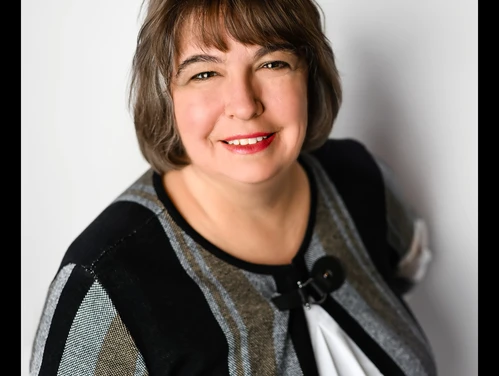Becky Andersen was used to being a problem solver.
After three decades of educating homeowners, schools, and businesses about the dangers of hazardous materials, the chemist and volunteer firefighter had found herself working for a consulting company. Her days involved responding to questions from a stable of concerned businesses and coaching them on how to clean up spills or navigate their way through other industrial problems.
Then, she started to get sick.
Andersen’s nervous system, overwhelmed by massive exposure to everything from chrome plating to toxic mold, suddenly began to fight back against everything all at once. Tiny exposures to everyday chemicals began to spark massive inflammation and pain. Car exhaust, cosmetics, even putting gas in her own vehicle suddenly could leave her exhausted and laboring to breathe.
“There were months where I wasn’t able to leave the house because something like going to a restaurant and having someone with too much Axe Body Spray behind me would set me off,” Andersen said. Visiting industrial sites became an impossibility, because “if I tried to do that, I’d end up in bed for four days.”
Andersen had been partially disabled for more than a year, restricted to working part-time, when her frustration led her to reach out to the Vocational Rehabilitation Services division of Iowa Workforce Development. She asked counselors Courtney Anderson and Yvette Clausen to help her find a way around her limitations and get back to a full workload.
The result was a new approach that shifted Andersen’s work strategy. Instead of site visits, she began to advise clients over the Internet under the name of Hazardous Materials Consulting. Vocational Rehabilitation’s Self-Employment program helped Andersen upgrade her technology and connected her with the branding consultants and experts who helped her translate in-person training practices into online, on-demand webinars.
“Sometimes, even internally, we can think of self-employment as, ‘We’re going to help this person with a disability buy a zero-turn radius lawnmower,’ ” Clausen said. “It can be more. I want to open people’s eyes to the fact that people with disabilities can have really high levels of employment.”
“Frankly, Courtney and Yvette were instrumental in helping me assess whether or not this was feasible,” said Andersen, who admits to more than a few doubts. “I struggled a lot with believing that this could actually work, but it’s working well. They helped me identify technologies that could help me do this and gave me the confidence to try it again.
“It’s the best move I’ve ever made.”
For Andersen, self-employment means being able to work when she’s able – but also the freedom to take it easy on the bad days. She still struggles with her health and the challenges associated with working around her limitations. “But I don’t let my disease run my life.”
“I have learned that I have to embrace the good with the bad,” she said. “There are days the disease wins. I have to cope and rest on those days to get back to the work that I love.”
Vocational Rehabilitation’s Self-Employment program was created to help individuals with disabilities achieve their employment goals even when working a traditional job proves to be impossible.
For more information, visit the self-employment page of IWD’s Vocational Rehabilitation Services website.
